LATVIA
The telegraph seals of Latvia seem to be complex as might be expected for its rather untidy history of domination by, usually,
Russia and, occasionally, Germany. The first seal below is tsarist Russian and the next two from their fairly brief period of independence.
Perhaps someone can throw some light on the last two.
| Updates. The above was written by Steve Hiscocks. I have only replaced a couple of images and added some stationery so far. - No pricing as yet. |
 |
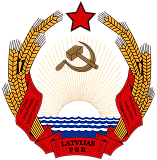 |
 |
| 1921-40 | 1940-90 | 1990 onwards |
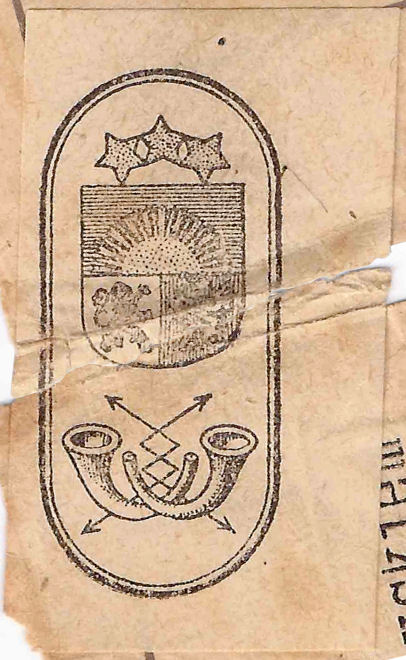 |
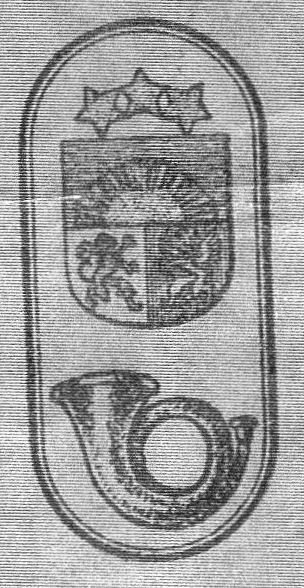 |
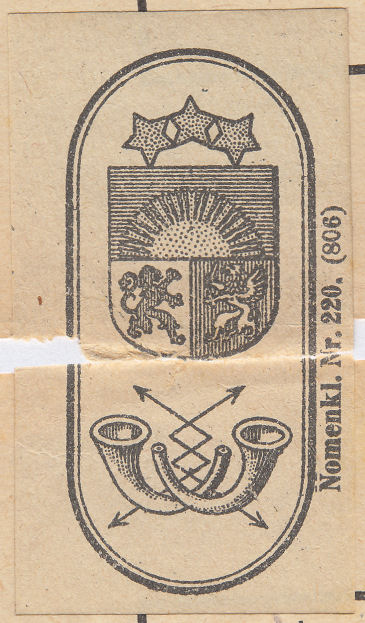 |
| #1 1926-9, 20mm. No number | #2 1934-5, 21mm | #3 1937-40, 21.3mm. With number |
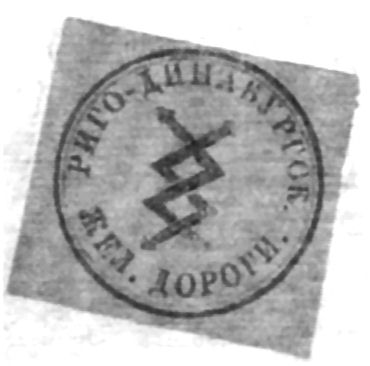 |
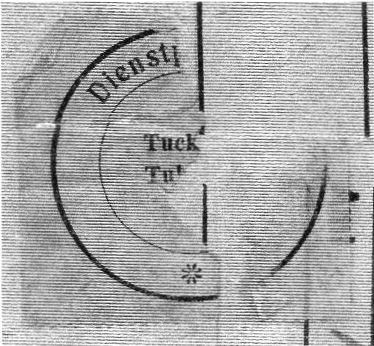 |
| #4 РИГО-ДИНАБЅРГОК ЖЕЛ. ДОРОГИ. (Riga-Daugavpils Railway) |
#5 38.5mm This is similar to a 1944 German type (Tukums). |
The central part of #4 is similar to that on a (perforated) Russian seal of 1941.
But if this is from before 1921 (as I suspect) then it needs to be moved to Russia.
| RH # | Type. | was | Description | Mint | Used | On telegram |
|---|---|---|---|---|---|---|
| - | - | 1 | Romanoff Eagle - Moved to Russia. | - | - | - |
| RH1 | 1 | - | 1926-9 Imperf. Black / White. Two horns. | - | - | - |
| RH2 | 2 | 3 | 1934-5 Imperf. Black / White. One horn. | - | - | - |
| RH3 | 3 | 2 | 1937-40 Imperf. Black / White. Two horns. | - | - | - |
| RH4 | 4 | 4 | Riga-Daugavpils Railway. Imperf. Black on pale blue. | - | - | - |
| RH5 | 5 | 5 | 1949? Imperf. Black on white. | - | - | - |
Hiscocks added the following 3 notes:
| Note 1. #1 [now moved to Russia] is very similar to #2 of Russia but not the same — it is smaller and the sceptre is longer. I suspect we will find, when more information is available, that special seals were not always prepared for other countries like Latvia and Finland within the Russian Empire in Tsarist times but whichever seals happened to be in use in nearby parts of Russia were used. There certainly seems to be nothing specifically Latvian about #1 above. |
| Note 2. #2 [now #1] seems by far the most common. The only copy of #5 seen is very badly damaged but is on a Deutsche Reichspost telegram delivered to an address in what was then called Tuckum (now Tukums) in Latvia (over 50km from Riga), called Tukkum by the Germans, with both Latvian and German names on the seal. The part-word Dienst means 'service' and the next letter looks like part of a 'p' so it may have been Dienstpost, servicepost. It has been suggested that the telegram dates from the Nazi occupation in World War II but it seems to be dated 20 June 1920, so it may relate to an earlier period. Further information is needed. |
| Note 3. While #4 was sold as Latvian, the symbol on it is very similar to that on Finnish seals of 1923-4. |
STATIONERY
Telegrams
A telegram used 28 November 1925, courtesy of Dave Elsmore.
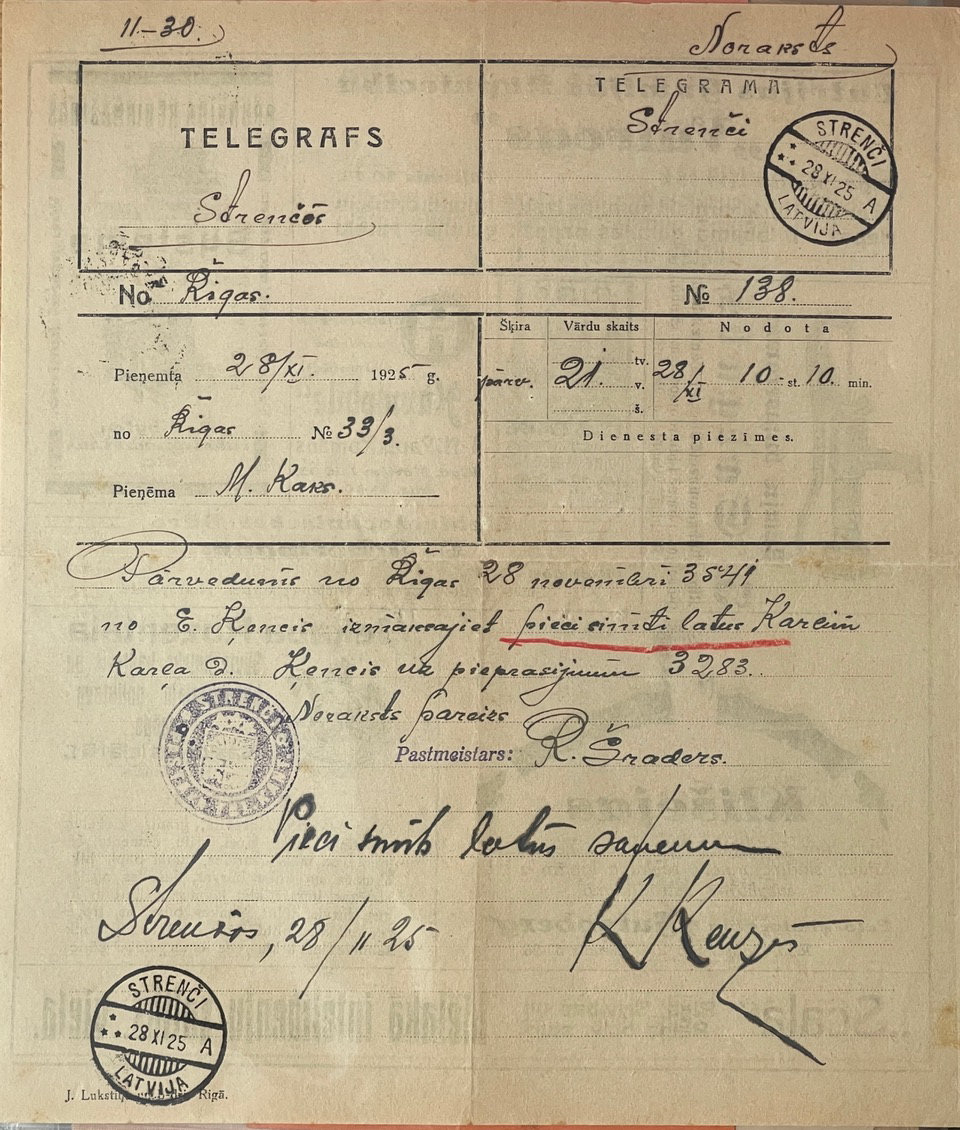
Note the negative Ottoman-type "seal" of Strenči with Latvian Arms, in addition to the date-stamp.
There is an imprint at bottom-left. Printed in Riga.

The back has numerous advertisements.
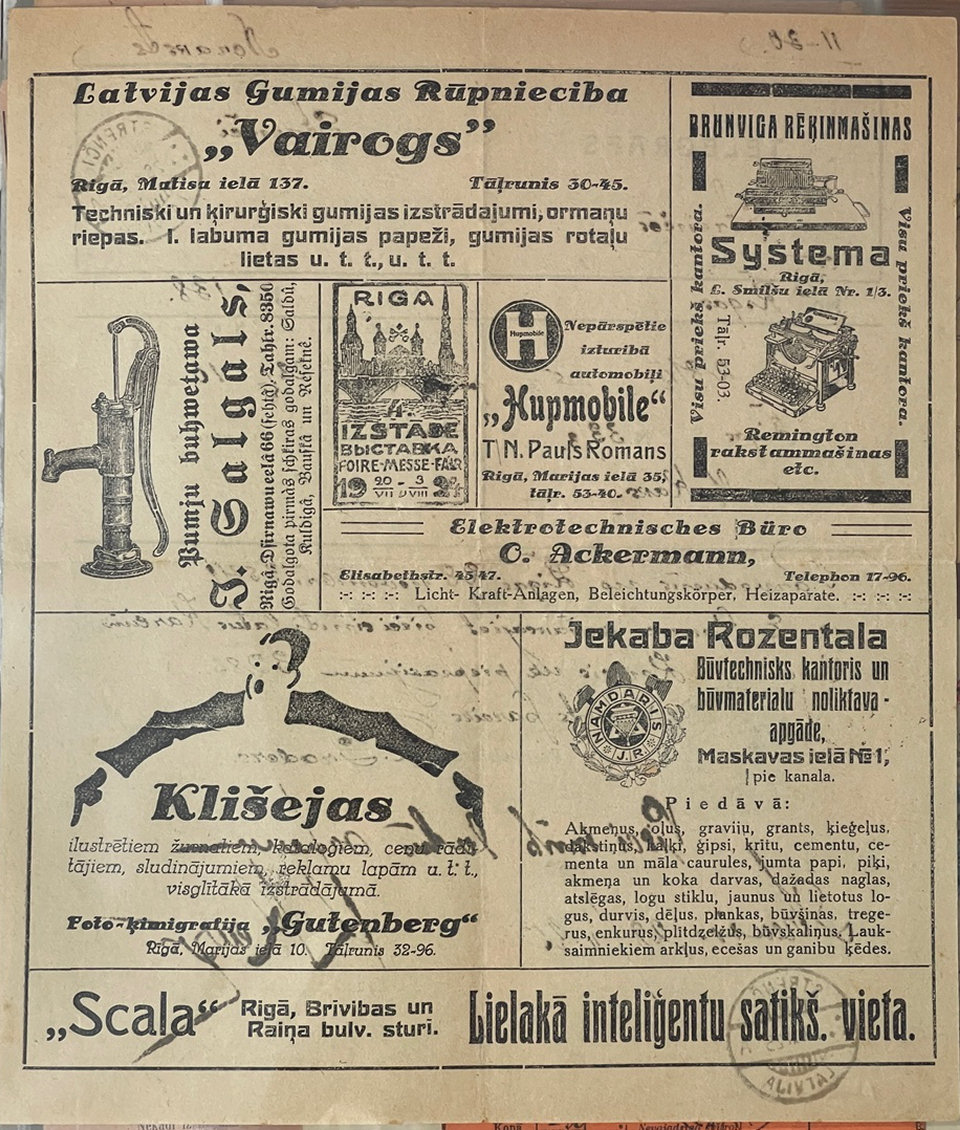
A telegram used 1 November 1926 in Riga.
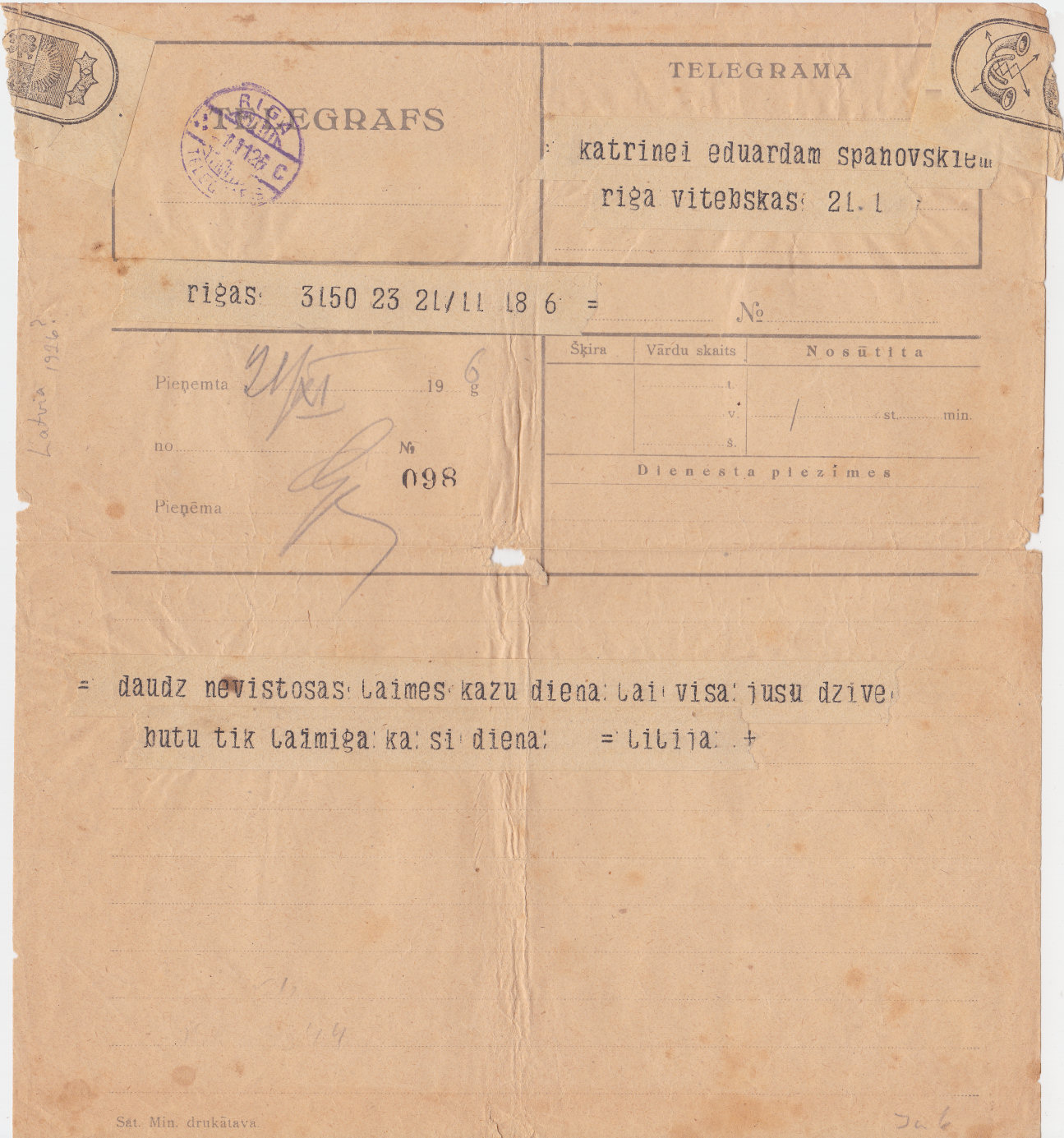
There is an imprint at bottom-left. "drukātava" means printing house.
![]()
Nothing on the back.
A Form Nr. 212 telegram printed 1931 and used in 1937.
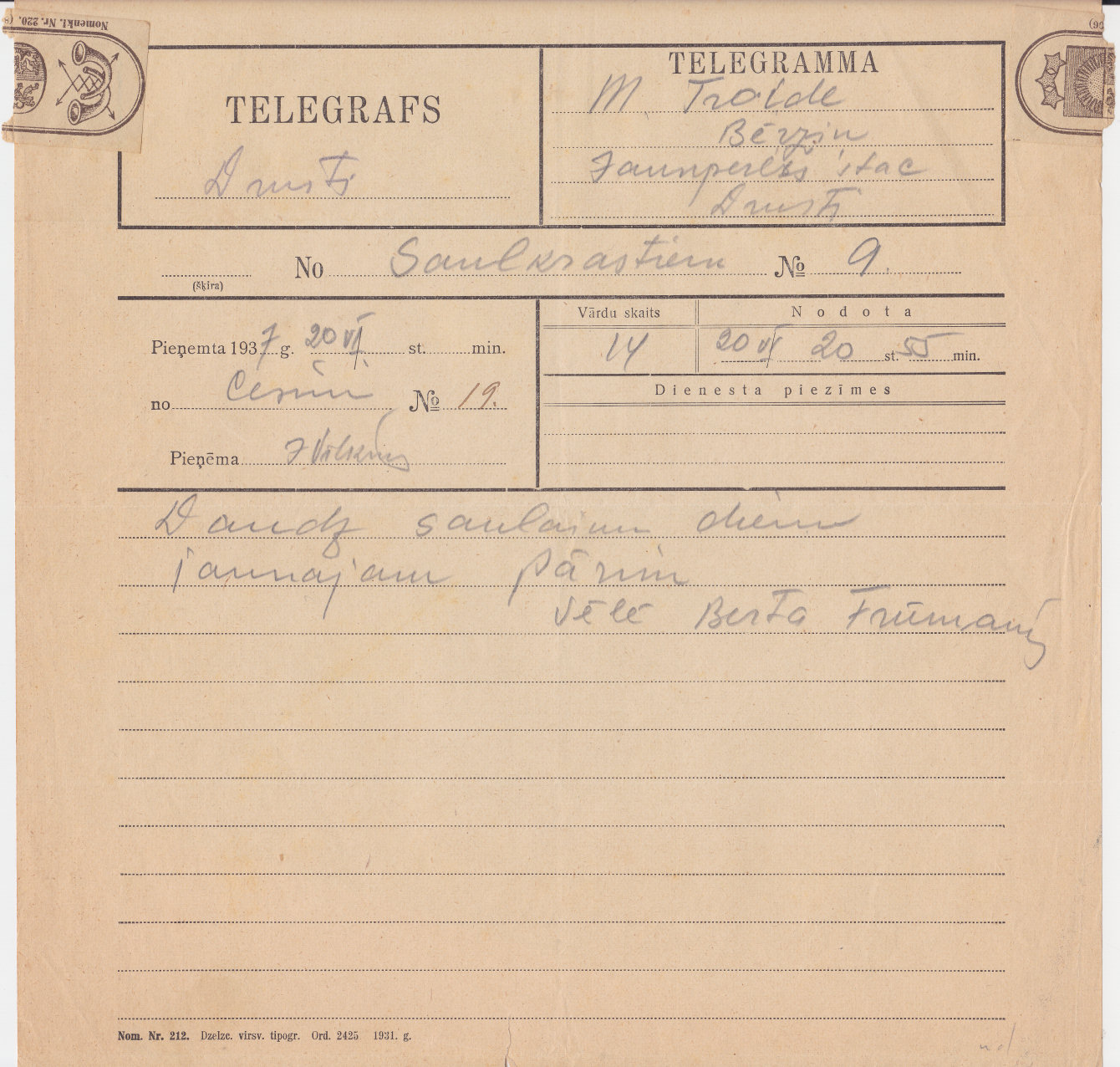
There is an imprint at bottom-left with "dzelzc. virsv. tipogr. Ord. 2425 1931. g." as well as the form number.

I have three with this imprint. Nothing on the back.
A Form used in September 1952. This has the new Coat of Arms and added Cyrillic script.
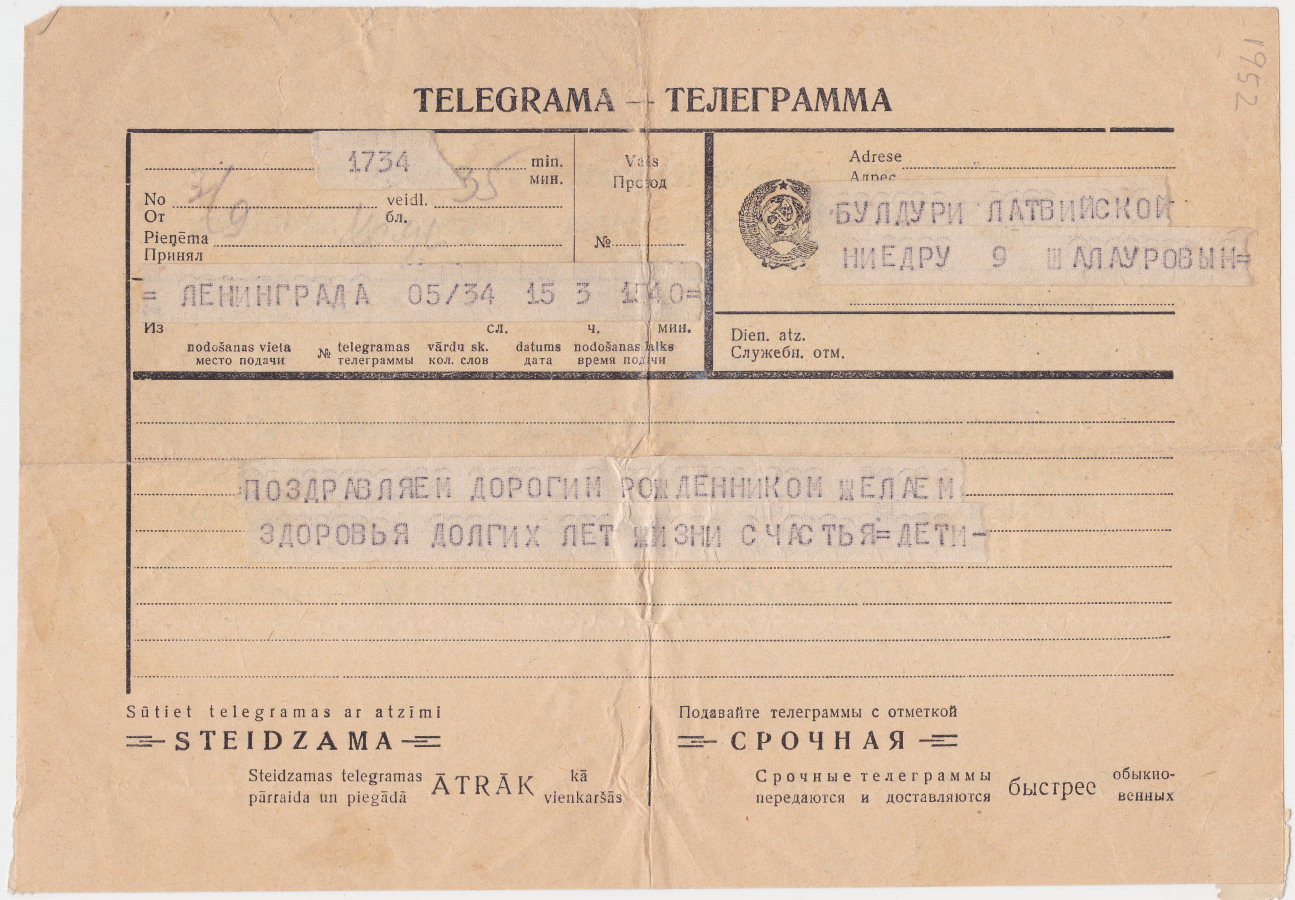
The back has a feint date-stamp and there is an imprint at bottom-left.
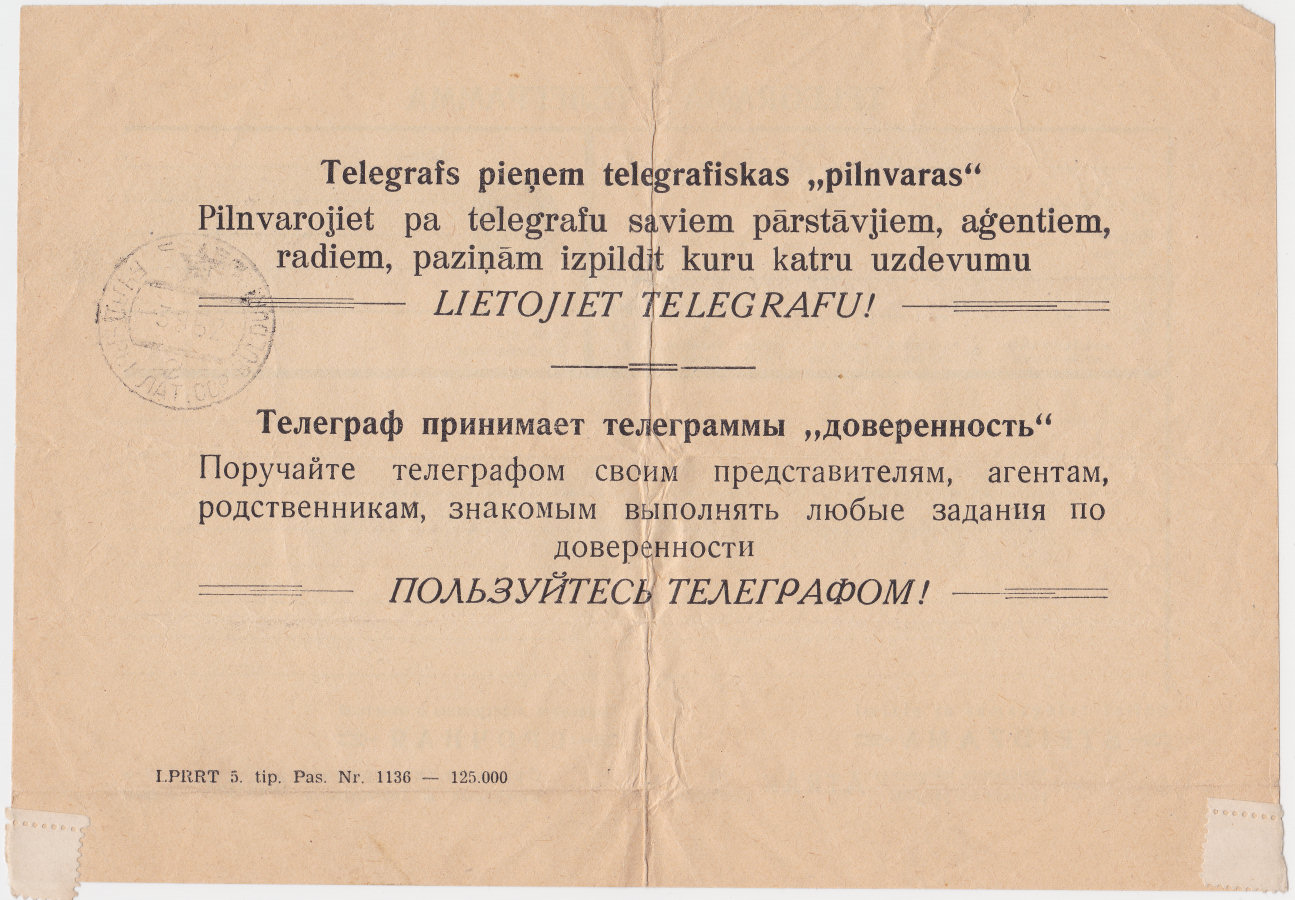
There is an imprint at bottom-left.

Greetings Telegrams
The ones I have were used in December, but they were probably also used for Birthdays, Weddings etc.
The outside of one sent in December 1978.
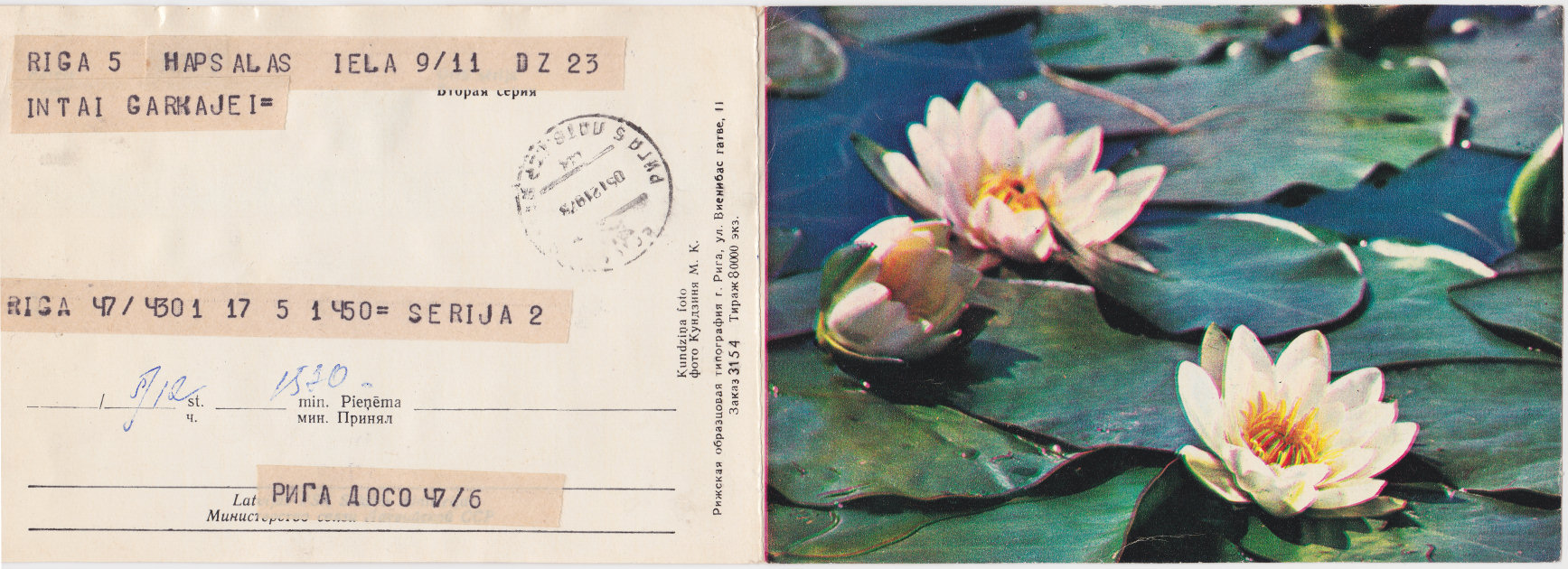
The side panel gives details

Similar to above, printed and sent in 1979 entitled "Rozes".
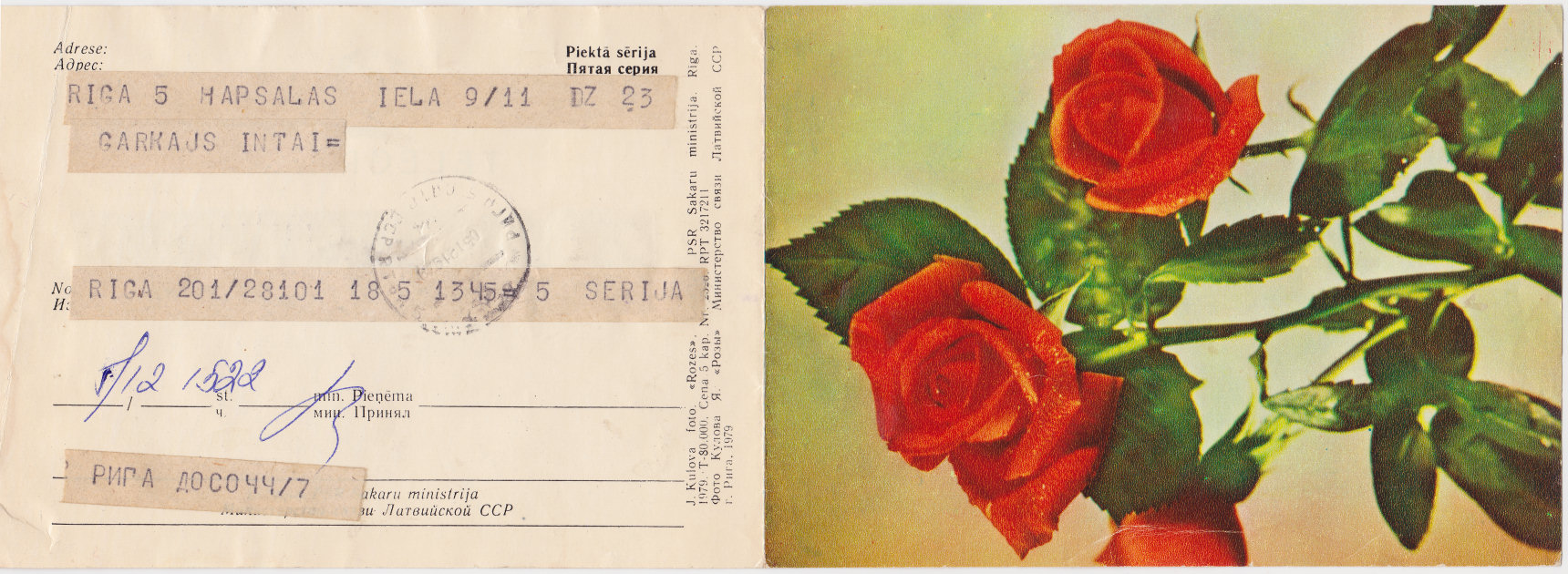
The side panel gives details

The inside of this and the one above has the Coat of Arms of Latvia and the message.
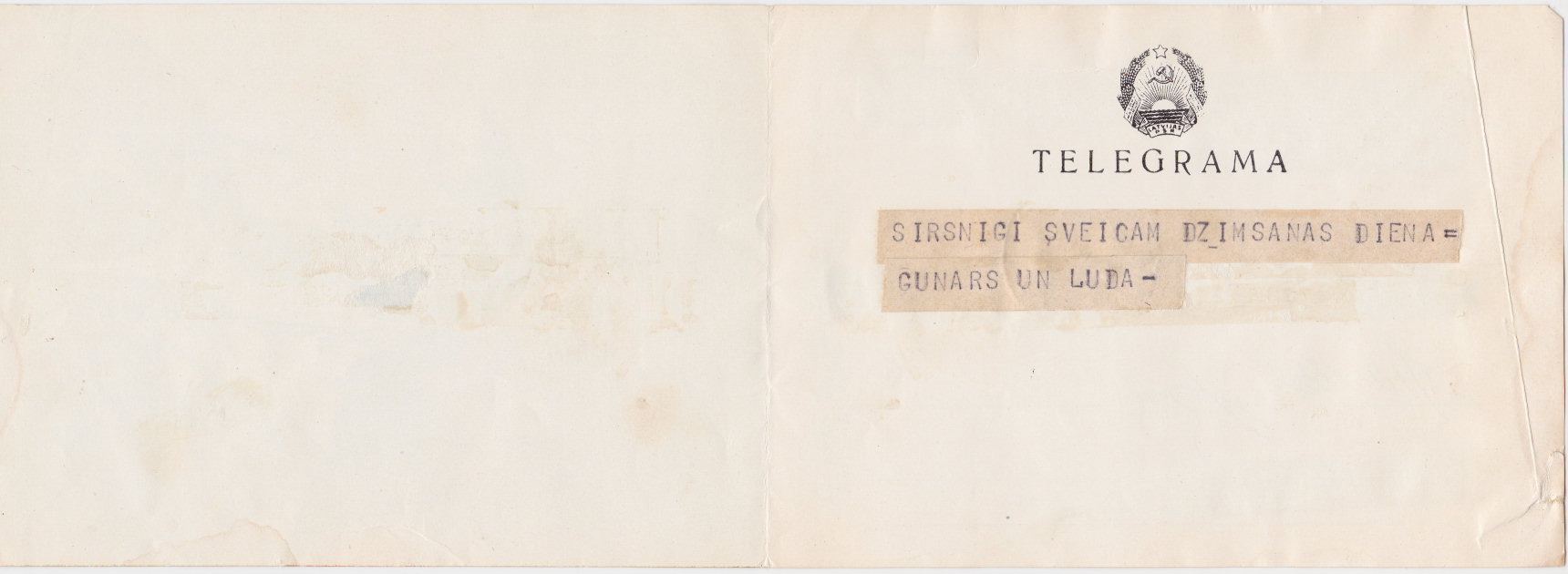
The outside of one printed in 1982 and used in December 1984. More "Rozes".
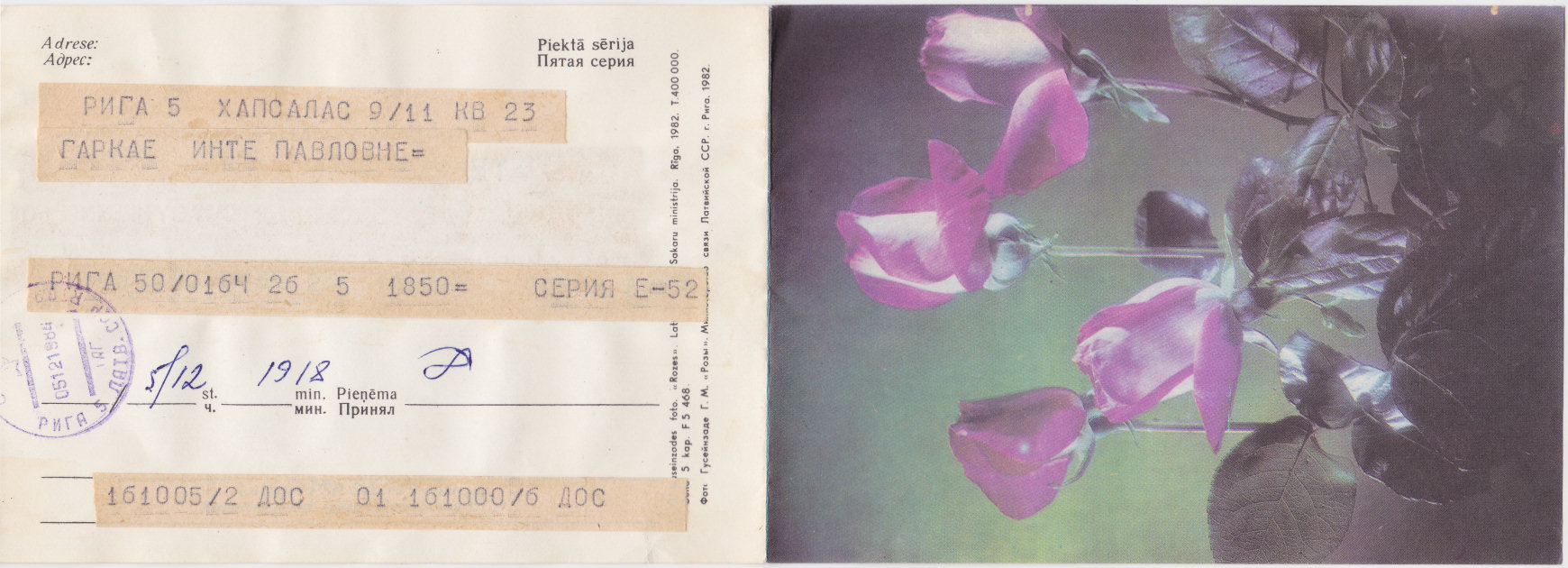
The side panel gives details

The inside has the message, but there is no Coat of Arms.
Pārvedums / (money) Transfer and Kvits / Receipt
"Naudas pārveduma telegramma" = "Money transfer Telegram"
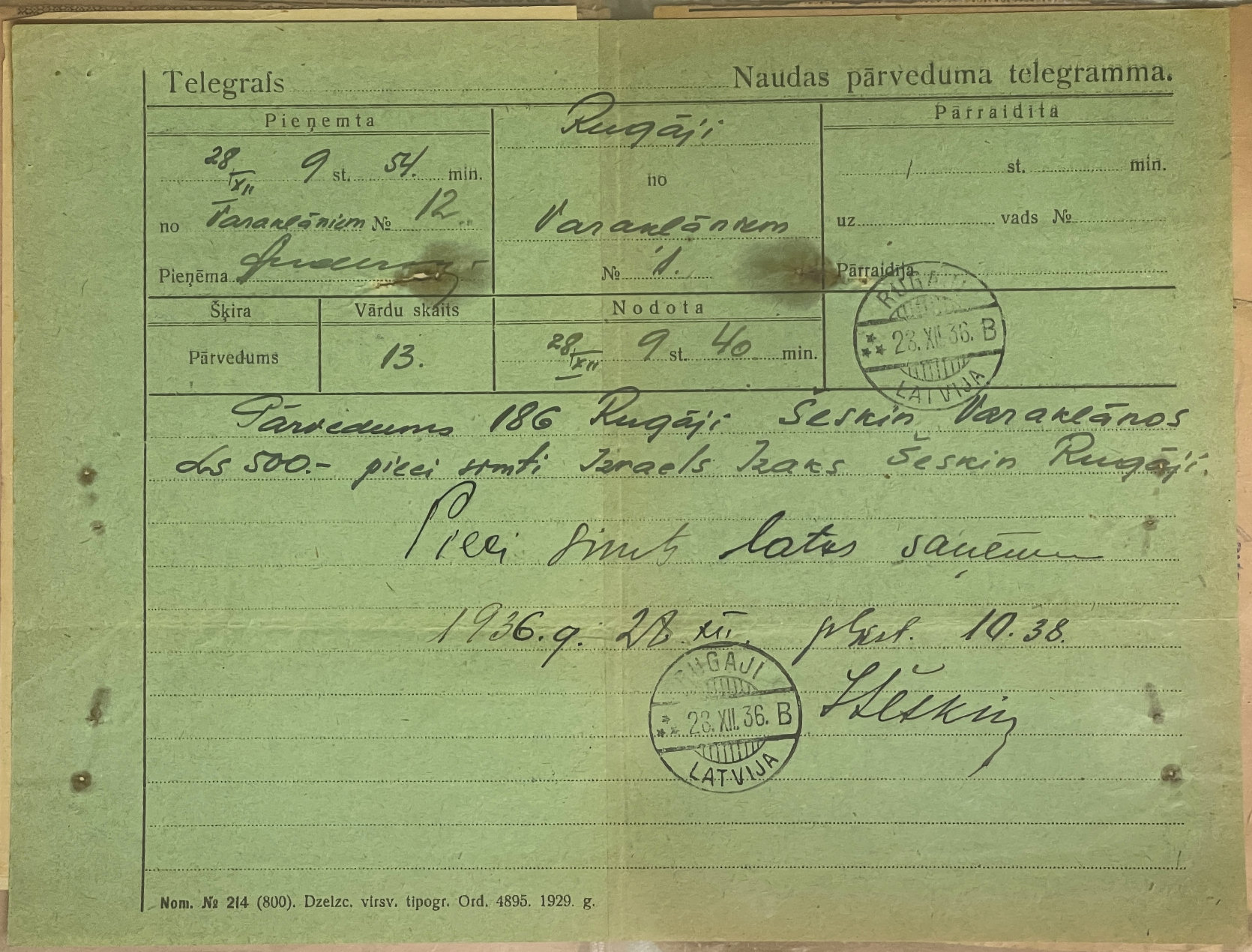
This was used 28 December 1936 in Rugaji. The imprint at bottom-left says "Nom. No 214 (800). Dzelzc. virsv. tipogr. Ord. 4895. 1929. g."
I would take it as Form No. 214, typographed in 1929. Image courtesy of courtesy of Dave Elsmore.
These have near the top an option to select "pastu" or "telegrafu" to choose whether the transfer should be done by mail or telegraph.
The ones I have seen have eithe telegrafu crossed out or none crossed out. presumably mail, the cheapest but slowest, would be the default.
The wording and layout vary over time.
The front and back of one used in November 1930. Mailed on the 12th in Tukums sending 100 Lats, and arrived at Rezekne on the 13th.
80 Santismo in stamps

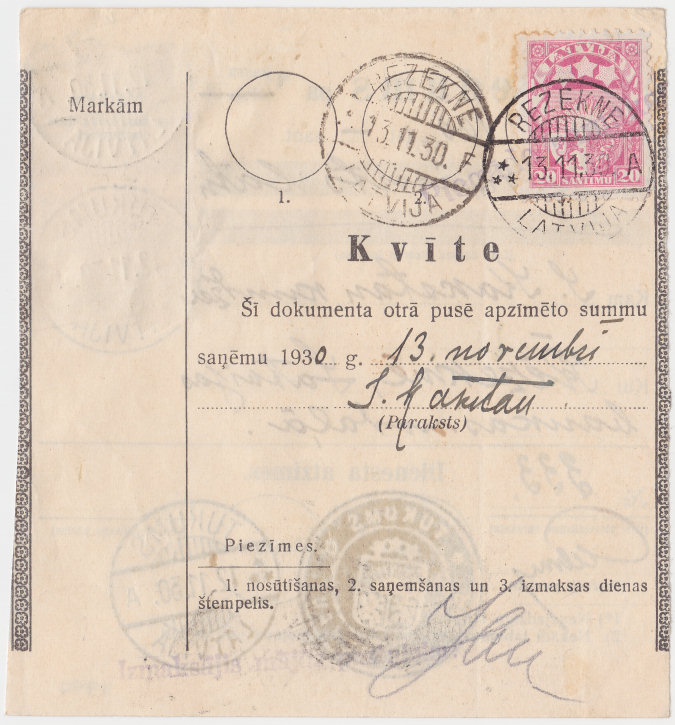
Note the negative Ottoman Tukums seal.
The front and back of one used in July 1936. Mailed on the 13th in Auge sending 50 Lats, 2 Sant, and arrived at Riga on the 14th.
40 Santismo in stamps
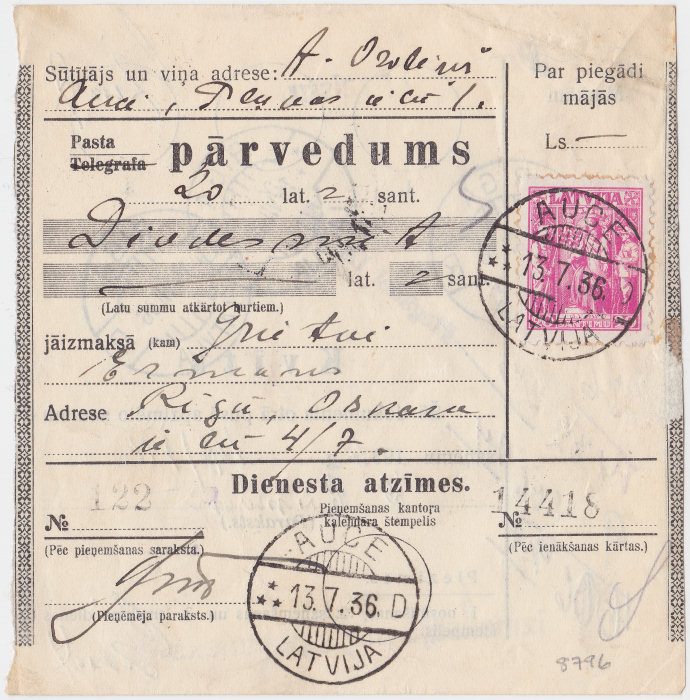
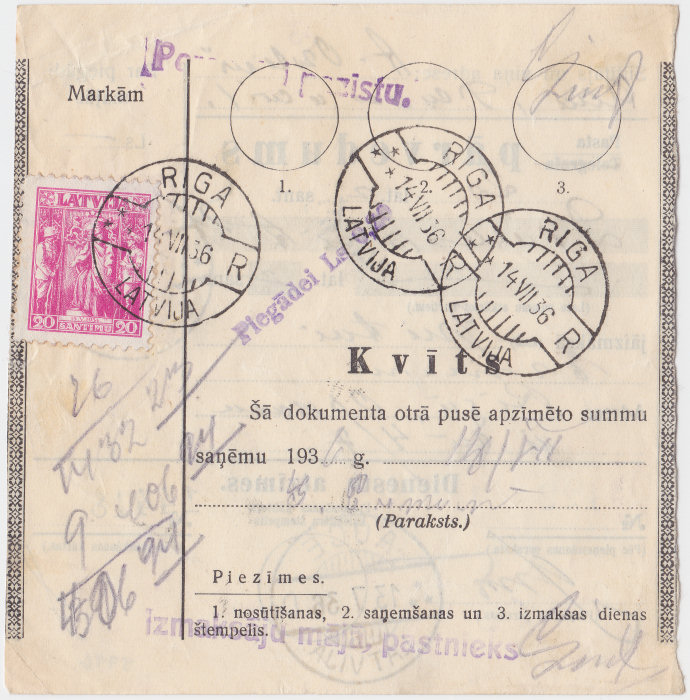
The front and back of one used in September 1936. Mailed on the 25th in Dselsava, sending 25 Lats, and arrived at Cēsis on the 26th.
50 Santismo in stamps
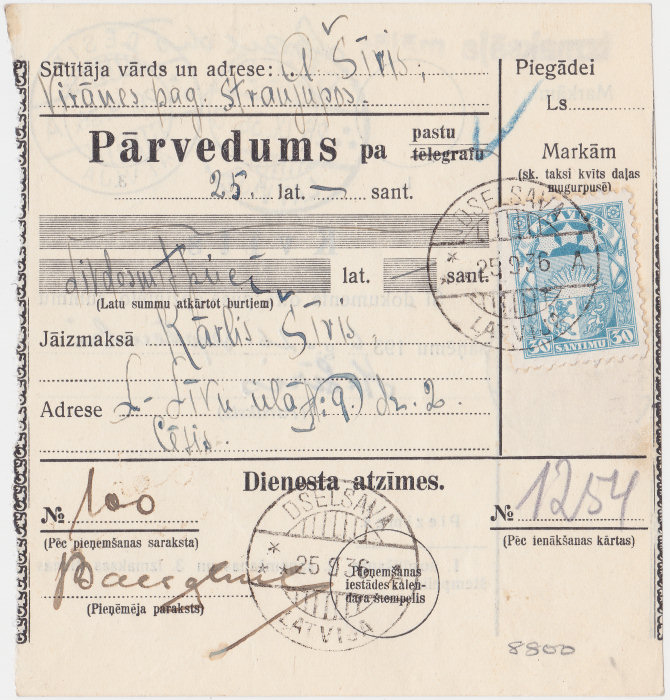
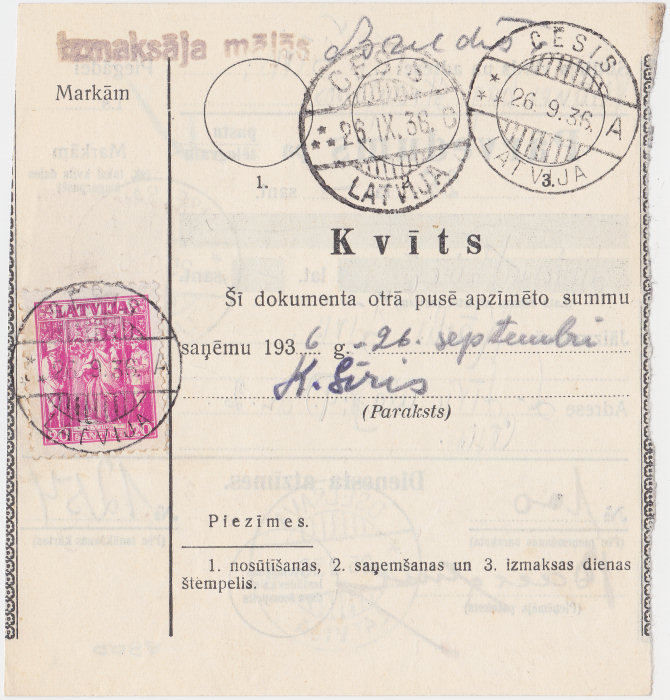
Though this looks a bit like the above, it is not telegraphic. It is in fact for Parcel delivery, sending a 3½kg item for 70 Santimu from Bauska on 7th April 1938, and arrived at Valka on the 11th.
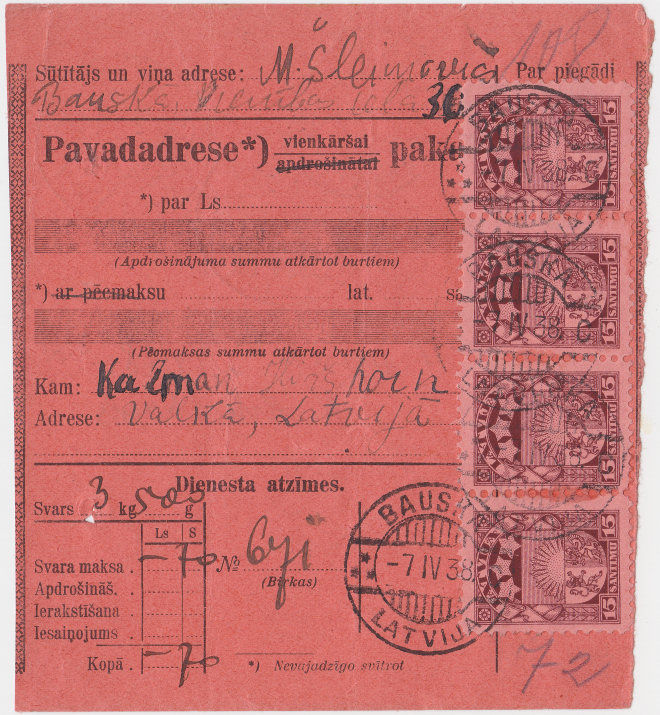
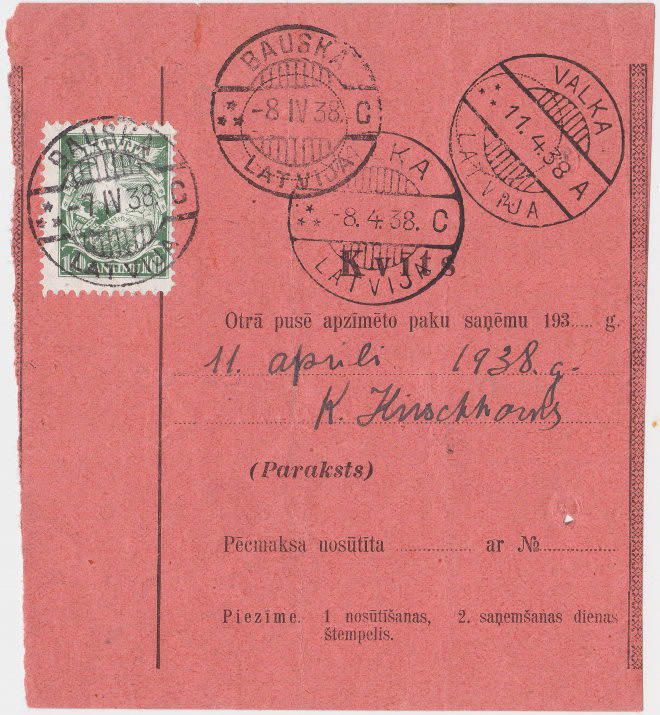
If anyone can provide scans to help with this, I am happy to give appropriate credit.


